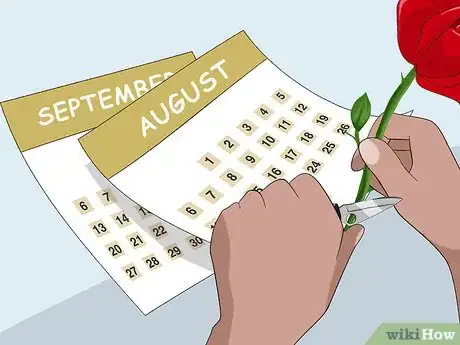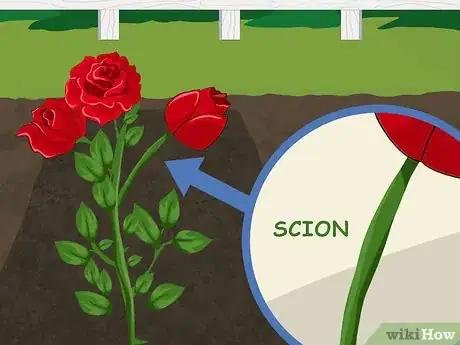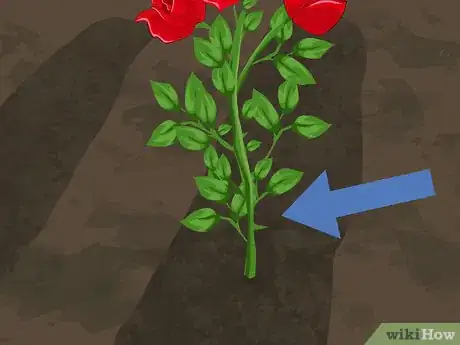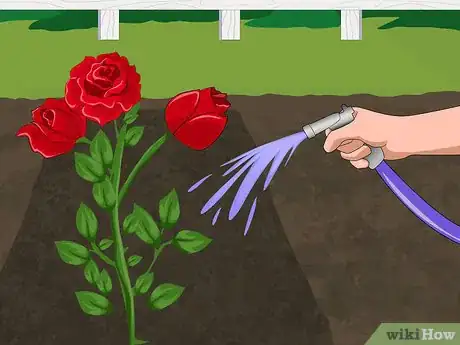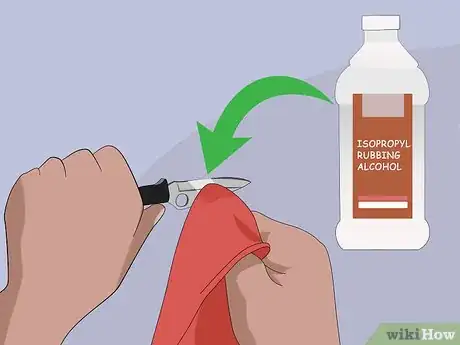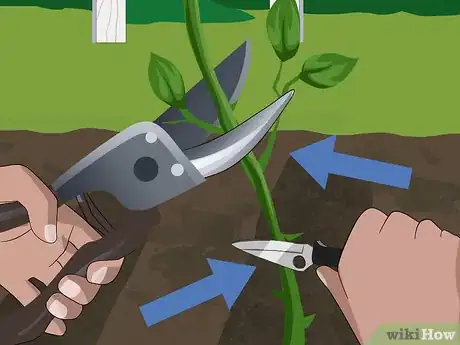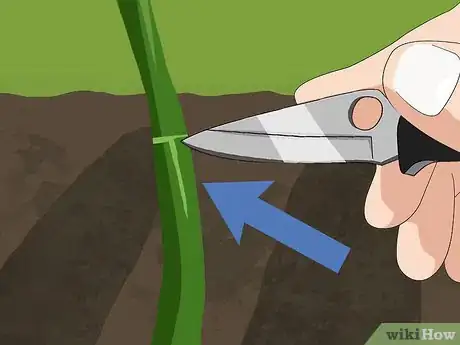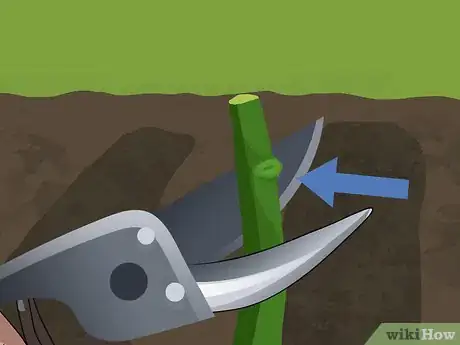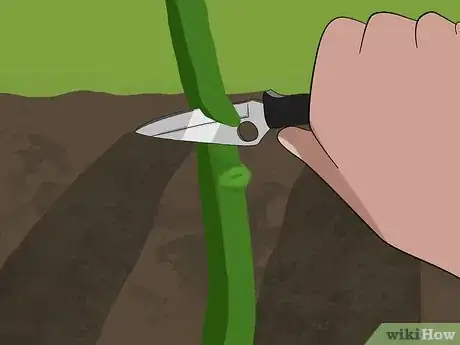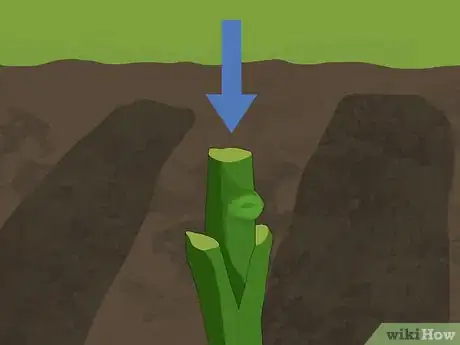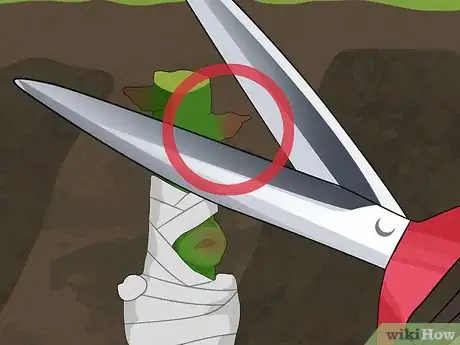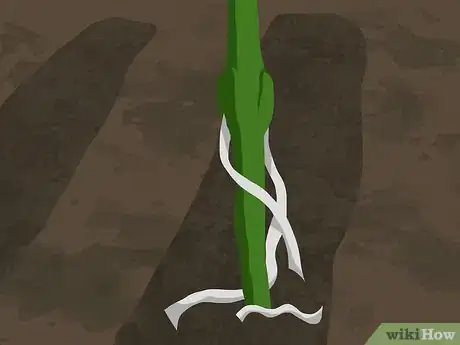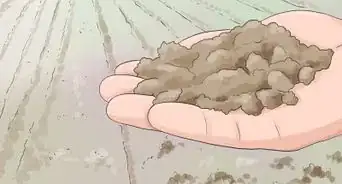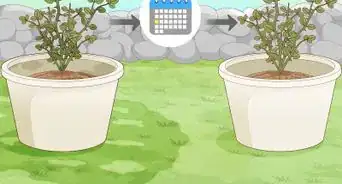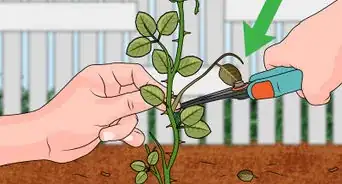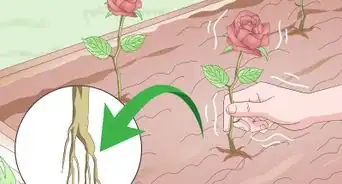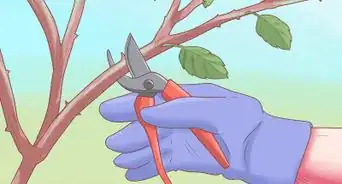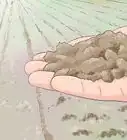This article was co-authored by wikiHow Staff. Our trained team of editors and researchers validate articles for accuracy and comprehensiveness. wikiHow's Content Management Team carefully monitors the work from our editorial staff to ensure that each article is backed by trusted research and meets our high quality standards.
wikiHow marks an article as reader-approved once it receives enough positive feedback. This article received 11 testimonials and 91% of readers who voted found it helpful, earning it our reader-approved status.
This article has been viewed 357,492 times.
Learn more...
Grafting, or budding, is a technique for propagating plants wherein you take a piece from one plant and fuse it onto another. With roses, it’s easier to propagate them with cuttings. But you can also graft roses, especially when you have a variety with beautiful flowers but a weak root system. One of the most popular methods for grafting roses is the T-bud method, but this does require some practice and patience to perfect.
Steps
Getting the Plants Ready
-
1Choose the right time. Graft your roses in mid-summer, because this is when the sap inside the plants is flowing. If the sap and nutrients are flowing, there's a better chance the graft will take and the new rose will thrive.
- The best time for grafting is after the mid-summer bloom cycle, which usually occurs in August.
-
2Select a scion. The scion, or the bud, is the plant you are going to be grafting onto another plant. With roses, a scion is often chosen because of its beautiful flowers, because those flowers will continue to grow after the graft.[1]
- The best scion is a young stem from the plant. The stem should have established leaves, should have flowered recently, and should have some hardwood starting to develop on it.
- For the best results, choose a stem from which the bloom has just faded.
Advertisement -
3Choose a rootstock plant. The rootstock is the plant to which the graft will be fused. Rootstocks are often chosen because they're healthy and hardy, but they may not have the prettiest flowers. In order for the graft to take, the rootstock must be another rose plant.
- Two of the most popular rose varieties for rootstock are Dr. Huey and Fortuniana.
-
4Keep the plants well watered prior to the graft. Roses need plenty of water to thrive, and the graft will have a better chance of taking if both the scion and rootstock plants are well watered before the procedure. Ideally, start giving both plants daily waterings in the two weeks leading up to the graft.
- Make sure the roses are watered thoroughly two days prior to the graft, and the night before.[2]
Grafting the Roses
-
1Sterilize your knife. Plants are susceptible to viruses, bacteria, and fungi just like humans are. You can prevent the spread of disease by working with sterilized gardening tools, especially when you're carrying out a delicate procedure like a graft. Not only will this help ensure the graft takes, but also that the plant survives.
- The easiest way to sterilize your budding knife is with ethanol or isopropyl alcohol.
- Get a clean rag or cloth damp with the alcohol. Wipe the blade thoroughly, making sure you get the tip, sides, and base of the knife. Be careful not to cut yourself in the process. Set the blade aside to air dry for a few minutes.[3]
-
2Prune the rootstock. With clean pruning shears, prune your rootstock plant to remove dead foliage, blooms, and stems. Select a healthy stem with many well-developed leaves for the actual graft site. Use the budding knife to remove all the buds and prickles from the middle section of the stem.
- Removing the prickles isn't strictly necessary, but it will prevent you from cutting yourself during the graft.
- Removing the buds is important because you want the buds from the scion to grow, not the ones from the rootstock.
- When pruning or taking cuttings, cut on a 45-degree angle to reduce damage and increase circulation.
-
3Cut a T into the rootstock. With the bud knife, cut an inch-long T shape into the bark of the rootstock. Make sure you do not penetrate the cambium layer, which is a wet, pale green color. Use the tip of the knife to gently open the flaps you created in the bark.
- The best place for the T cut is near the middle of the stem, between two nodes. Nodes are where leaves and buds grow out from the stem.
-
4Cut and trim a stem. Cut off the stem you want to use for the scion. Cut off the top and bottom from the stem, leaving a 2-inch (5-cm) section in the middle. Make sure that section of stem has at least one bud eye, where a new leaf could grow from the stem.
- Use the budding knife to cut off any prickles, buds, and leaves from the piece.
- Trim the stem an inch (2.5 cm) below the lowest bud eye.[4]
-
5Cut the scion from the stem. Place the knife on the stem above the bud eye. Insert the blade deep enough into the stem to penetrate the bark and the cambium layer. This is the layer just behind the bark that carries nutrients.
- Cut out the bud eye, making sure you take the bark and cambium layer as well.
-
6Insert the scion in to the rootstock immediately. Make sure the bud eye is facing upward, as this means the stem is facing the right direction. As you insert the scion into the rootstock, the bark flaps will open around the scion. Push the scion all the way in to the bottom of the T, leaving the bud eye exposed at the top of the flaps.
- The cambium layers of the scion and root stock will now be in contact, and this is what will allow the graft to take.[5]
-
7Secure the graft with grafting tape. Close the bark flaps over the scion. Wrap a few layers of grafting tape around the graft. Wrap the area above and below the bud eye, but leave the bud eye itself exposed.
- Don’t be afraid to pull the tape gently to stretch it out, as this will ensure the cambium layers stay in contact.[6]
Caring for Grafted Roses
-
1Give the plant plenty of water. Grafted plants need lots of water. For the next two weeks, water the rootstock daily to ensure the soil stays moist. You don’t want the soil soaking wet, but make sure it stays damp.[7]
-
2Trim the first buds from the scion. Once the scion starts to create new growth on the rootstock, it will begin to grow new buds. But while the scion is still establishing itself, the buds can be too heavy and can damage the bud union. To reduce stress on the bud union, trim off the first three or four buds that grow until the graft is fully healed.
- Trim the buds with a sharp knife or scissors as soon as they emerge.[8]
- To help give the new plant the best chance, you can also prune the rootstock above the graft.
-
3Let the tape fall off on its own. Grafting tape is a special kind of tape, and over time it will naturally decompose and fall off. Do not remove the tape from the rootstock. When enough time has passed, the tape will come off on its own, and this will ensure it stays on long enough for the graft to heal.[9]
Community Q&A
-
QuestionCan I graft two times on the rose?
 Ravi ShankarCommunity AnswerYes, you can graft two or more if the rootstock is healthy enough to provide required stock to the scion.
Ravi ShankarCommunity AnswerYes, you can graft two or more if the rootstock is healthy enough to provide required stock to the scion. -
QuestionCan I grow a new rose bush from a cutting?
 Community AnswerYes, you can grow new rose bushes from cuttings. In fact, this method is easier and preferable to grafting. To grow a rose from a cutting, start by selecting a healthy stem from a healthy rose bush. Trim off flowers, buds, and bottom leaves. Dip the stem in rooting hormone and plant it in fertile soil. Cover the cutting with plastic, and provide it with plenty of sun and water as it takes root.
Community AnswerYes, you can grow new rose bushes from cuttings. In fact, this method is easier and preferable to grafting. To grow a rose from a cutting, start by selecting a healthy stem from a healthy rose bush. Trim off flowers, buds, and bottom leaves. Dip the stem in rooting hormone and plant it in fertile soil. Cover the cutting with plastic, and provide it with plenty of sun and water as it takes root. -
QuestionI have a rose cane growing in the ground, and the entire top flowering part of the standard rose was broken off in the wind. Can I graft a new scion onto this cane?
 Community AnswerMaybe. If the above ground root-stock is still healthy, a scion has a chance of taking. One problem I have found in my experience is that a strong root-stock tends to start growing suckers as a way to save the "mother plant". You can try to keep the suckers cut off, and hopefully the scion will take.
Community AnswerMaybe. If the above ground root-stock is still healthy, a scion has a chance of taking. One problem I have found in my experience is that a strong root-stock tends to start growing suckers as a way to save the "mother plant". You can try to keep the suckers cut off, and hopefully the scion will take.
Things You'll Need
- Scion
- Rootstock
- Isopropyl alcohol
- Clean cloth
- Pruning shears
- Sharp budding knife
- Grafting tape
References
- ↑ http://www.rosesolutions.net/bud_graft.html
- ↑ https://scvrs.homestead.com/BuddingUltimate.html
- ↑ http://gardeningsolutions.ifas.ufl.edu/care/tools-and-equipment/disinfecting-tools.html
- ↑ https://www.youtube.com/watch?v=GobKpmQrtUU
- ↑ http://www.rosesolutions.net/bud_graft.html
- ↑ https://www.youtube.com/watch?v=GobKpmQrtUU
- ↑ https://scvrs.homestead.com/BuddingUltimate.html
- ↑ https://scvrs.homestead.com/BuddingUltimate.html
- ↑ https://scvrs.homestead.com/BuddingUltimate.html
About This Article
To graft roses, prune the buds and leaves off the rootstock, which should be the stem of a plant with some well-developed branches. Next, cut a T shape into the rootstock with a budding knife, but be careful not to cut through the light green cambium layer. Then, cut off the top and bottom from the stem you want to use as a scion, making sure you have at least one bud eye. You should also push the scion into the T-shaped part of the rootstock with the bud eye facing upwards. Finally, secure the bark flaps around the scion with grafting tape. For tips on how to care for a grafted rose plant, read on!
